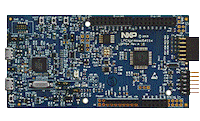LPCXpresso51U68

-
Core
Cortex-M0+
-
Device
LPC51U68JBD64 -
CMSIS Pack
LPCXpresso51U68_BSP
-
spi_interrupt_b2b_transfer_slave
µVision AC6The spi_interrupt_board2board_slave example shows how to use spi driver as slave to do board to board transfer with interrupt:In this example, one spi instance as slave and another spi instance on other board as...See more details in readme document.
Download Pack -
spi_interrupt_b2b_transfer_slave
Keil Studio AC6, GCC, IARThe spi_interrupt_board2board_slave example shows how to use spi driver as slave to do board to board transfer with interrupt:In this example, one spi instance as slave and another spi instance on other board as...See more details in readme document.
Download Pack -
spi_polling_b2b_transfer_master
Keil Studio AC6, GCC, IARThe spi_polling_board2board_master example shows how to use spi driver as master to do board to board transfer with polling:In this example, one spi instance as master and another spi instance on othereboard as...See more details in readme document.
Download Pack -
spi_polling_b2b_transfer_master
µVision AC6The spi_polling_board2board_master example shows how to use spi driver as master to do board to board transfer with polling:In this example, one spi instance as master and another spi instance on othereboard as...See more details in readme document.
Download Pack -
spi_polling_b2b_transfer_slave
Keil Studio AC6, GCC, IARThe spi_polling_board2board_slave example shows how to use spi driver as slave to do board to board transfer withpolling:Notice: The SPI slave of this example uses interrupt mode, as there is no polling mode for SPI...See more details in readme document.
Download Pack -
spi_polling_b2b_transfer_slave
µVision AC6The spi_polling_board2board_slave example shows how to use spi driver as slave to do board to board transfer withpolling:Notice: The SPI slave of this example uses interrupt mode, as there is no polling mode for SPI...See more details in readme document.
Download Pack -
usart_9bit_interrupt_transfer
µVision AC6The usart_9bit_interrupt_transfer example shows how to use usart driver in 9-bit mode in multi-slave system. Master can send data to slave with certain address specifically, and slave can only receive data when it is...See more details in readme document.
Download Pack -
usart_9bit_interrupt_transfer
Keil Studio AC6, GCC, IARThe usart_9bit_interrupt_transfer example shows how to use usart driver in 9-bit mode in multi-slave system. Master can send data to slave with certain address specifically, and slave can only receive data when it is...See more details in readme document.
Download Pack -
usart_dma_double_buffer_transfer
Keil Studio AC6, GCC, IARThis example shows how to use the DMA driver to implement a double buffer receive scheme from the USARTThe example shows the double buffer constructed using two descriptors (g_pingpong_desc). These descriptors are...See more details in readme document.
Download Pack -
usart_dma_double_buffer_transfer
µVision AC6This example shows how to use the DMA driver to implement a double buffer receive scheme from the USARTThe example shows the double buffer constructed using two descriptors (g_pingpong_desc). These descriptors are...See more details in readme document.
Download Pack
